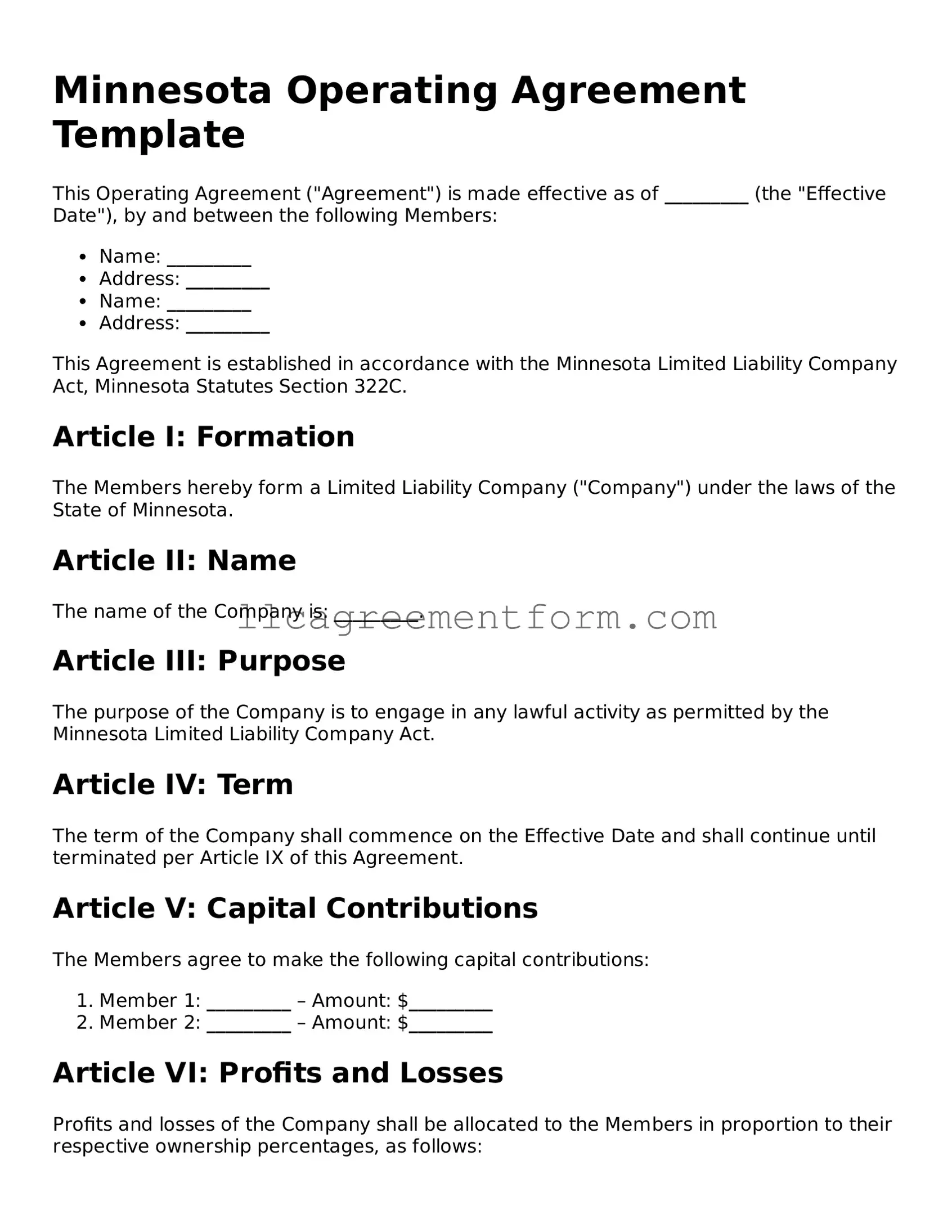Free Operating Agreement Document for Minnesota
The Minnesota Operating Agreement form is a crucial document for any limited liability company (LLC) in Minnesota, outlining the management structure and operating procedures of the business. This agreement helps define the roles of members, their rights, and responsibilities, ensuring that everyone is on the same page. If you're ready to establish your LLC's framework, fill out the form by clicking the button below.
Get Operating Agreement Now
